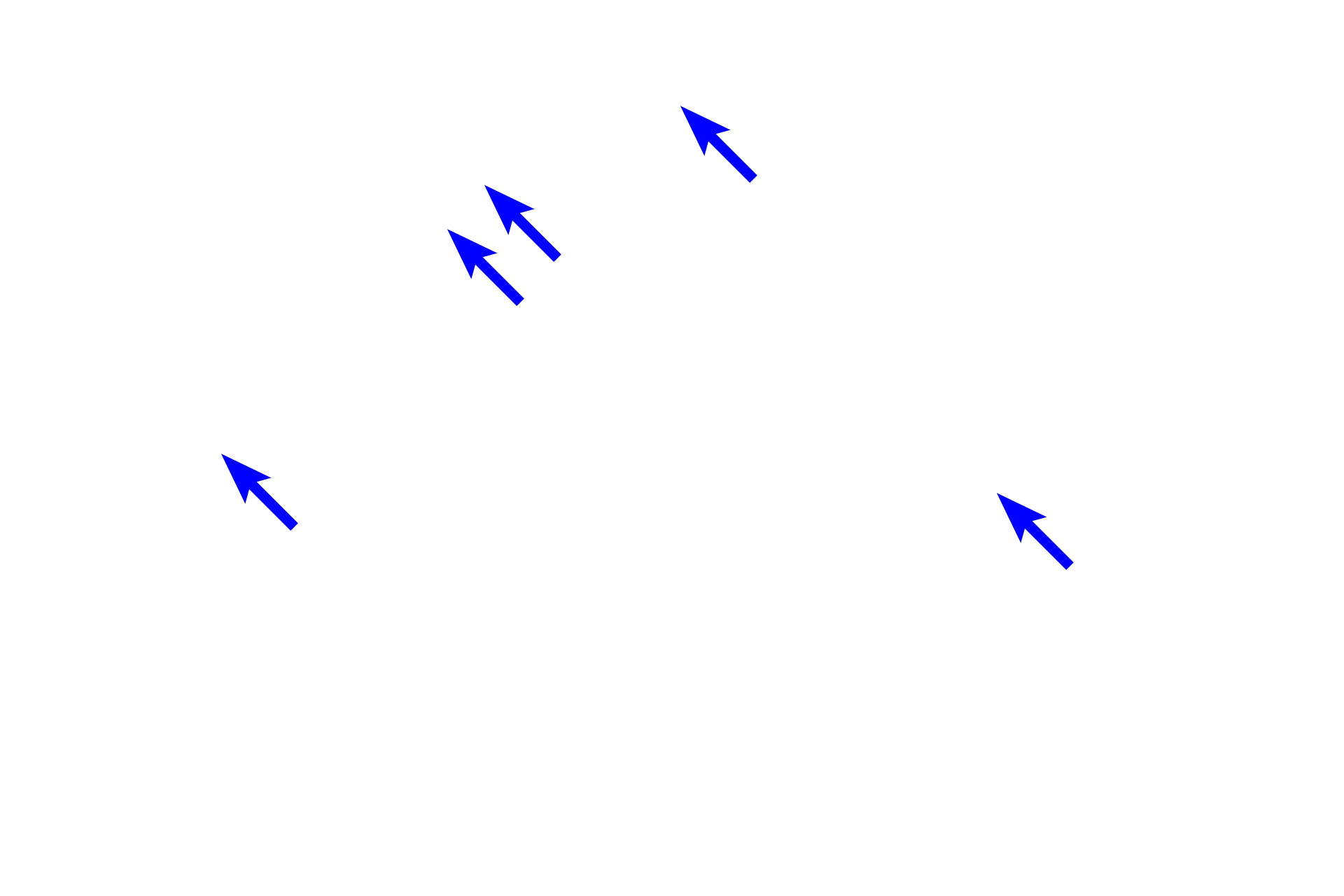
Brown adipose connective tissue
The second type of adipose tissue is brown adipose tissue. Adipocytes are multilocular, possessing numerous small fat droplets rather than the single large droplet in unilocular adipocytes of white adipose tissue. The large number of mitochondria in the adipocytes and the rich blood supply produce the brown color. The main function of multilocular adipose cells is to produce heat by non-shivering thermogenesis and is present in infants and hibernating animals. 400x

Multilocular adipocytes >
Adipocytes in brown adipose tissue contain numerous, small lipid droplets (multilocular) in their cytoplasm along with abundant mitochondria. The extraction of the lipid during tissue processing produces a frothy appearance to the cytoplasm. Brown adipose tissue is so-called because the abundant mitochondria with their large amounts of cytochrome oxidase, impart a brown color to the cells. Also adding to the color is the rich vascular supply.

Lipid droplets
Adipocytes in brown adipose tissue contain numerous, small lipid droplets (multilocular) in their cytoplasm along with abundant mitochondria. The extraction of the lipid during tissue processing produces a frothy appearance to the cytoplasm. Brown adipose tissue is so-called because the abundant mitochondria with their large amounts of cytochrome oxidase, impart a brown color to the cells. Also adding to the color is the rich vascular supply.

Nuclei >
Nuclei are spherical and centrally located, not compressed beneath the plasma membrane at the periphery of the cell as in unilocular adipocytes.

Lobule >
Brown adipose tissue is subdivided into lobules by connective tissue septa, however the connective tissue stroma within the lobule is sparse. The tissue has a rich supply of capillaries. In newborns, brown adipose tissue makes up about 5% of the total body mass and is primarily located on the back, along the upper half of the spine, and toward the shoulders. It disappears during childhood.

Blood vessels
Brown adipose tissue is subdivided into lobules by connective tissue septa, however the connective tissue stroma within the lobule is sparse. The tissue has a rich supply of capillaries. In newborns, brown adipose tissue makes up about 5% of the total body mass and is primarily located on the back, along the upper half of the spine, and toward the shoulders. It disappears during childhood.

Connective tissue
Brown adipose tissue is subdivided into lobules by connective tissue septa, however the connective tissue stroma within the lobule is sparse. The tissue has a rich supply of capillaries. In newborns, brown adipose tissue makes up about 5% of the total body mass and is primarily located on the back, along the upper half of the spine, and toward the shoulders. It disappears during childhood.

Unilocular adipocytes >
Unilocular adipocytes can occur along with brown adipose tissue.

Image source >
This image is owned by Dr. Jose Luis Calvo and is used under a royalty-free agreement.